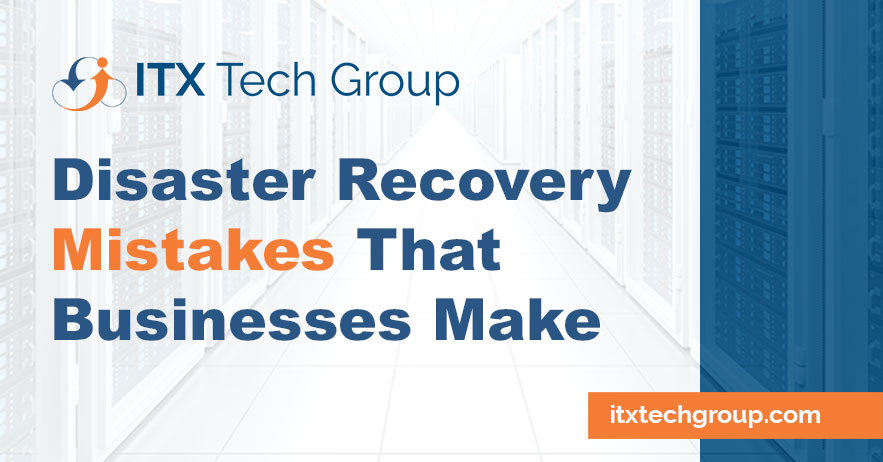These days, businesses rely heavily on their IT infrastructure to operate efficiently and effectively.
However, the increasing complexity of IT systems and the growing threat landscape make businesses vulnerable to various disasters, ranging from hardware failures to cyberattacks.
Despite the importance of disaster recovery planning, many businesses make critical mistakes that can hinder their ability to recover from IT-related disasters.
In this article, we’ll explore some of the most common IT disaster recovery mistakes that businesses make and provide actionable strategies to mitigate these risks.
Failure to Create a Comprehensive Disaster Recovery Plan
One of the most significant mistakes businesses make is not having a comprehensive disaster recovery plan in place.
Without a clear roadmap for how to respond to IT disasters, businesses may struggle to recover critical systems and data in a timely manner.
To mitigate this risk, businesses should develop a detailed disaster recovery plan that outlines roles and responsibilities, identifies critical systems and data, defines recovery objectives and priorities, and establishes procedures for response and recovery.
Lack of Regular Testing and Updates
A disaster recovery plan is only effective if it is regularly tested and updated to account for changes in technology, infrastructure, and business processes.
Many businesses make the mistake of creating a plan but failing to test it regularly or update it as needed.
Regular testing helps identify weaknesses and gaps in the disaster recovery plan, allowing businesses to refine their procedures and improve their readiness to respond to IT disasters effectively.
Underestimating the Importance of Data Backups
Data loss can occur due to various reasons, including hardware failures, software glitches, human error, and cyberattacks. Yet, many businesses fail to prioritize data backups as part of their disaster recovery strategy.
Without regular backups, businesses risk losing critical data, which can have severe financial and operational consequences.
Implementing automated backup solutions and regularly testing backups ensures that data can be quickly restored in the event of an IT disaster.
Relying Solely on On-Premises Infrastructure
While on-premises infrastructure has its advantages, relying solely on it for disaster recovery can be risky.
Natural disasters, power outages, and other unforeseen events can render on-premises systems inaccessible, making it challenging to recover critical data and applications.
To mitigate this risk, businesses should consider implementing cloud-based disaster recovery solutions that provide greater resilience, scalability, and accessibility.
Cloud-based solutions enable businesses to replicate their data and applications to remote data centers, ensuring business continuity even in the face of on-premises failures.
Neglecting Employee Training and Awareness
In the event of an IT disaster, employees play a crucial role in executing the disaster recovery plan and minimizing downtime.
However, many businesses overlook the importance of training and educating employees on their roles and responsibilities during a disaster.
Providing regular training sessions and simulations helps ensure that employees are familiar with the disaster recovery plan, know how to respond to emergencies, and understand their roles in mitigating the impact of IT disasters.
Ignoring Cybersecurity Preparedness
With the rise of cyber threats such as ransomware, phishing, and malware, businesses must integrate cybersecurity preparedness into their disaster recovery planning.
Failing to address cybersecurity risks leaves businesses vulnerable to cyberattacks that can disrupt operations, compromise sensitive data, and cause financial losses.
Implementing effective cybersecurity measures, such as firewalls, intrusion detection systems, endpoint protection, and security awareness training, helps mitigate the risk of cyber threats and enhances the overall resilience of the IT infrastructure.
Conclusion
Avoiding common IT disaster recovery mistakes requires a proactive and holistic approach that addresses vulnerabilities, establishes clear procedures, and prioritizes preparedness.
By creating a comprehensive disaster recovery plan, regularly testing and updating it, prioritizing data backups, leveraging cloud-based solutions, providing employee training and awareness, and integrating cybersecurity preparedness, businesses can enhance their resilience and minimize the impact of IT disasters.
Remember, investing in disaster recovery planning is essential for safeguarding business continuity, protecting critical assets, and maintaining customer trust in the face of unforeseen events.
ITX Tech Group has been serving small, medium, and large scale businesses with their IT support and cybersecurity needs all over the United States since 2011, so we’re confident we can provide you with affordable, professional IT solutions for years to come!
Connect with us for a free consultation to discuss your business technology needs.

